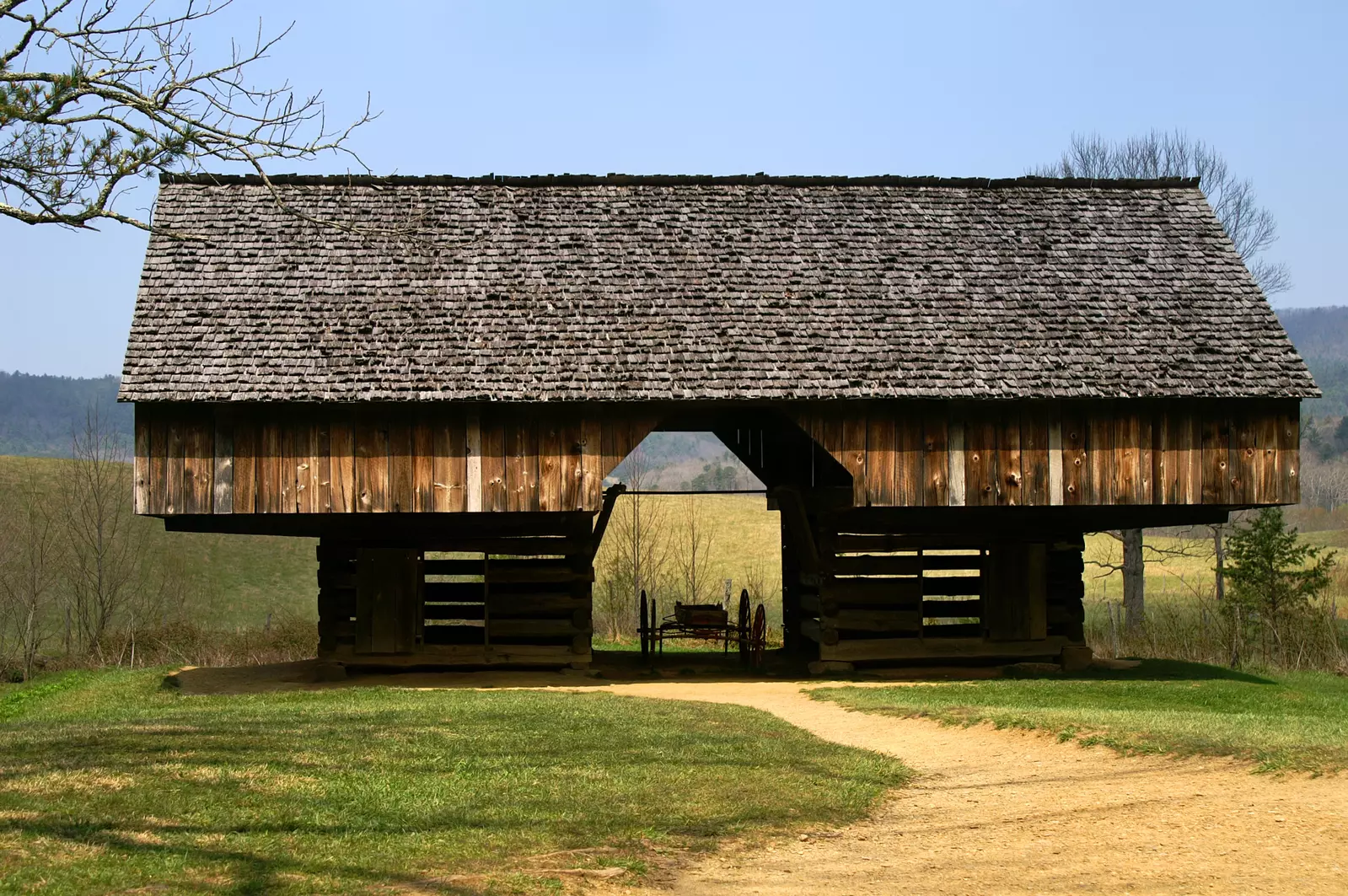When Tennessee and North Carolina started to purchase land for the creation of the Great Smoky Mountains National Park, this included most of the land in the mountains north of Cades Cove. A few families willingly sold their land and moved out of the Cove, but some resisted the effort. John W. Oliver was one man who resisted, and he even went to court several times before he lost. The John Oliver Cabin can still be seen in the park today, and it is the first historical structure you’ll come to along the Cades Cove Loop Road.
Other Historical Structures in Cades Cove:

Cantilever Barn: The cantilever barn is one structure you’ll come across on the second half of the 11-mile loop through Cades Cove. Its unique origin and design make it worth a stop. It features an upper story that is larger than its base and was helpful in storing hay and allowing animals to get out of the sun or rain.
Cades Cove Methodist Church: Methodists were active in Cades Cove as early as the 1820s. The Cades Cove Methodist Church building you can see today was built in 1902 by John D. McCampbell, who was also the pastor of the church. The building featured two front doors, which allowed men to enter and sit on one side of the chapel, and women and children to sit on the other side.
Cades Cove Primitive Baptist Church: The Cades Cove Baptist Church was established in 1827. After a period of time, a division developed due to a biblical interpretation where one side believed the scripture allowed for missionary work, while the other side did not. As a result, the church became known as the Primitive Baptist Church in 1841, and they met in a log building before the existing white frame church was built in 1887.

Cades Cove Missionary Baptist Church: After the split with the Cades Cove Baptist Church, Pastor John Adams and other congregation members established the Cades Cove Missionary Baptist Church in 1841. They were able to build their own structure on Hyatt Hill in 1894, and as their congregation continued to grow, they built the new church you can see today in 1915.
Henry Whitehead Place: The Henry Whitehead Place has one of the most interesting stories behind it. Though separation and divorce was rare in Cades Cove, Matilda Shields was deserted by her first husband, and she and her son were left without a home. Matilda then met Henry Whitehead, who promised her the finest home in all of Cades Cove. The sawn log home had thick log walls and a true brick chimney. The home is about a 5-minute drive from the Cades Cove Visitor Center.
John P. Cable Grist Mill: The John P. Cable Grist Mill was built in the early 1870s and came as an important resource for those living in the valley. It allowed them to grind their corn and wheat into flour to make bread. It was also used to cut lumber. There were a total of 6 or 7 mills in Cades Cove, but the John P. Cable Mill is the only one that remains.
To learn more about the history of Cades Cove, read “Your Complete Guide to Cades Cove History.”

